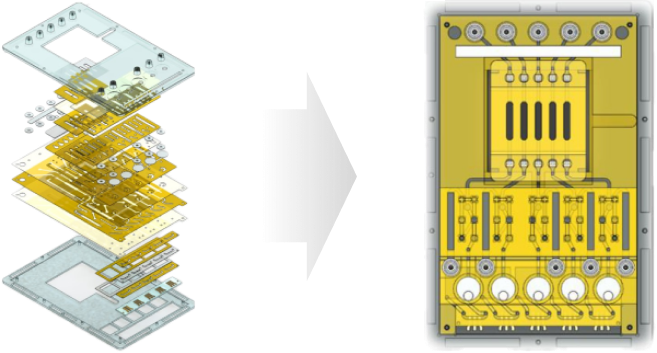Microfluidic device·chip
Platform
-
Technology Name
Microfluidic Devices and Chips
-
Overview
Microfluidic devices and chips are devices or chips that perform precise manipulation and control based on fluid phenomena in microstructures typically less than 1 mm. The behavior of fluids at the micro-scale, where factors such as surface tension, energy dissipation, and fluid resistance begin to dominate the system, follows microfluidics, which is different from "macrofluidics" behavior.
-
Technical Features
Microchannels are formed using semiconductor processes such as lithography and MEMS processes, or polymer CNC machining, thermoforming, and injection molding. Biological samples are injected into the microchannels to implement processes such as mixing, separation, and reaction.
-
Technical Advantages
Compared to traditional test methods using pipettes and droppers, microfluidic devices and chips require much less sample volume, thus significantly reducing the use of expensive chemicals and reagents. Microfluidic devices and chips can test various substances and suppress toxic substances.
-
Application of
TechnologyMicrofluidic devices and chips can be utilized in most fields dealing with small amounts of biochemical substances, such as bioengineering, pharmaceutical engineering, chemical engineering, and patient testing and diagnosis.
-
Scope of Service
Technology LevelThe National Nanofab Center is capable of designing and manufacturing microchannels and various microstructures of at least 50㎛, and has built a modular microfluidic device and chip library that can be applied to various fields. Therefore, it can provide services that meet the needs of most users.
-
Contact Information
Person in charge Dongki NohContact Number 042-366-1637Email ndg@nnfc.re.kr -
Related Images
